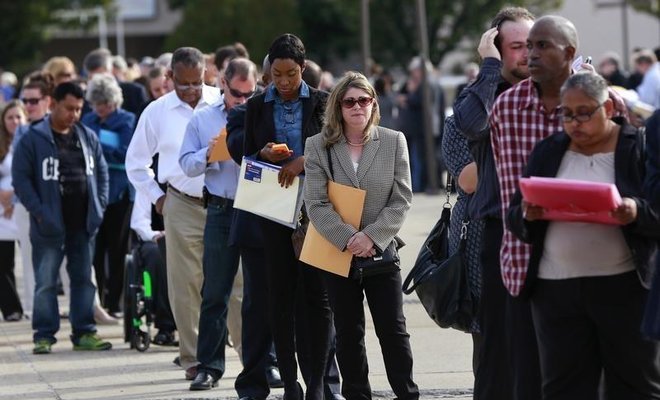Although the July employment report was strong, it does nothing to fundamentally change the outlook for the Federal Reserve. And employment reports in future months are likely to similarly take a back seat to the most critical trigger factor for monetary policy: inflation—or lack thereof.
The July employment report highlighted the growth trend in the US labor market that the country has seen since the Great Recession, with the number of jobs created exceeding forecasts while sending the unemployment rate lower, Bloomberg reported.
Despite the health of the US job market, a September Fed rate hike is widely considered unlikely, and even a December increase doesn’t appear to be a guarantee. In fact, the CME Fed Funds Futures showed the chance of no rate change in December at less than 50%. This is because, against the backdrop of an improving labor market, wage inflation remained tepid at only 2.5%.
Granted, the level of wage inflation is higher than the core inflation measure—which excludes volatile food and energy prices—of only 1.5% in the second quarter, but it is very low for a labor market that looks hot.
But the labor market isn’t as hot as it appears, and inflation is being held back by low levels of labor force participation. Annual labor force participation bottomed out in 2015 at 62.7%—the lowest annual rate since 1977. In 2016, despite the job gains and a fall in unemployment, the annual average labor participation rate rose to only 62.8%, which was only a modest bump—and it was still the lowest level since 1977.
In the latest employment report, the participation rate was 62.9%. In other words, even with the job growth there’s little sign of any resurgence in labor force participation. It’s not that the labor market isn’t tight; it’s just that there are more people on the sidelines now than there have been in 40 years.
Since the Great Recession, the country has seen the labor force participation rate retreat to levels not seen since the 1970s, when women began entering the workforce in large numbers. Unless wages rise substantially, the participation rate is likely to remain low. And yet, without a higher participation rate accompanying a low unemployment rate, wages are unlikely to rise significantly.


